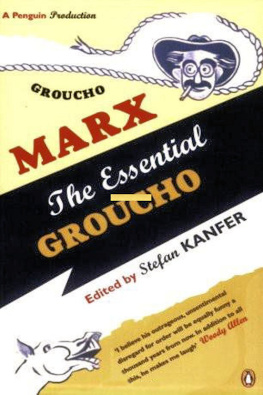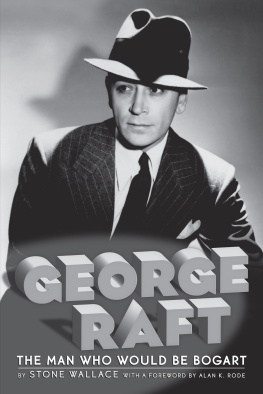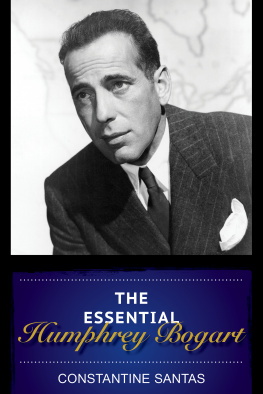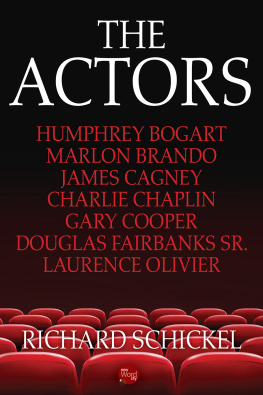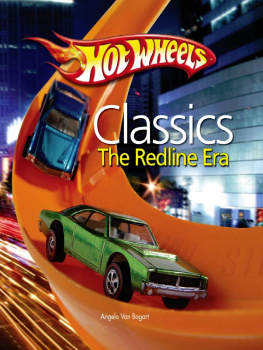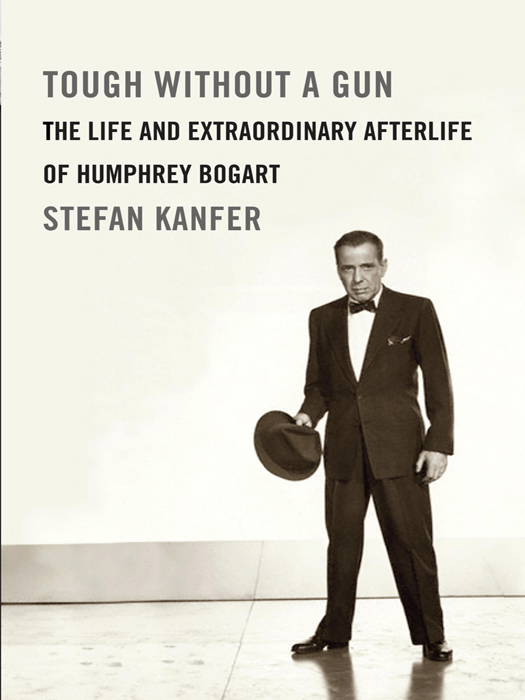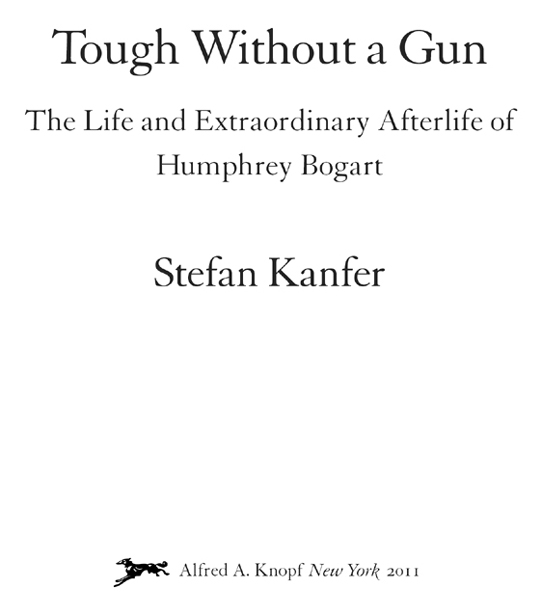ALSO BY STEFAN KANFER
Somebody: The Reckless Life and Remarkable Career of Marlon Brando
Stardust Lost: The Triumph, Tragedy, and Mishugas of the Yiddish Theater in America
Ball of Fire: The Tumultuous Life and Comic Art of Lucille Ball
Groucho: The Life and Times of Julius Henry Marx
This Is a Borzoi Book Published by Alfred A. Knopf
Copyright 2011 by Stefan Kanfer
All rights reserved. Published in the United States by Alfred A. Knopf, a division of Random House, Inc., New York, and in Canada by Random House of Canada Limited, Toronto.
www.aaknopf.com
Knopf, Borzoi Books, and the colophon are registered trademarks of Random House, Inc.
Library of Congress Cataloging-in-Publication Data
Kanfer, Stefan.
Tough without a gun : the life and extraordinary afterlife of Humphrey Bogart / by Stefan Kanfer.1st ed.
p. cm.
eISBN: 978-0-307-59531-7
1. Bogart, Humphrey, 18991957. 2. Motion picture actors and actressesUnited StatesBiography. I. Title.
PN 2287. B 48 K 36 2011
791.43028092dc22
[B] 2010022524
Jacket image: Humphrey Bogart, c. 1956 Bettmann/Corbis
Jacket design by Abby Weintraub
v3.1
FOR LYNN HENSON
Those friends thou hast, and their adoption tried,
Grapple them to thy soul with hoops of steel.
CONTENTS
INTRODUCTION
JOE GILLIS: Youre Norma Desmond. You used to be big.
NORMA DESMOND: I am big. Its the pictures that got small.
S unset Boulevard has it in reverse. Toward the end of the twentieth century, it was the pictures that got big. They got enormous. They offered surround sound, high-density images, computerized special effects, wide-screen galactic epics.
Its the stars that got small.
This has nothing to do with ability. But it does have to do with qualitywith the kinds of films that are being made, the green and undemanding audiences who see them, the bottom-lining studios that produce them, and, finally, the actors who appear in them.
Modern leading men are well trained, skilled in their craft, buff, manipulated by powerhouse publicists. What they dont have is singularity. Impersonators dont do Tobey Maguire or Brad Pitt or Leonardo DiCaprio or Christian Bale et al. because these actors dont have imitable voices or faces. This is in sharp contrast to the leading men of the past. Men like Cary Grant, Gary Cooper, James Cagney, Edward G. Robinson, and Humphrey Bogart provided field daysand nightsfor comedians and impressionists. And first among those equals was Bogart, the most imitated movie actor of all time. His unique, almost musical sibilance, his creased frown and rare, infectious smile gave him a quality that was at once dangerous and sympathetic. Which is why, more than fifty years after his death, he attained a summit no other actor had ever reached. The American Film Institute ranked him as the greatest male legend in cinema history. It is impossible to imagine anyone supplanting him.
The reasons are numerous and irreversible. For one thing, films are no longer the centerpieces of American culture, the artifacts that everyone goes out to see at the same time. Not only is the attention of the young fractured by Twitter, TiVo, Facebook, YouTube, iPhones, and iPods; now there are also ways for them to catch up with new movies within months of their national release.
For another, the collapse of the studio system in the 1960s meant that promising actors could no longer be brought along slowly. As well see, Bogart began as a heavy and was slain in some twenty-seven films before he was offered a major romantic role. (I played more scenes writhing around on the floor, he once recalled, than I did standing up.)
Demographics also play a part. Today, young viewers constitute some 70 percent of the filmgoing audience. Understandably, they want to see actors closer to their own ages. When Bogart broke through, he was forty-two.
Finally, a Humphrey Bogart can come along once in a century: someone who isnt conventionally handsome or particularly versatile (he couldnt dance like his contemporary James Cagney, he looked out of place in Gary Cooperstyle Westerns, and comedy was never his long suit) but who can convince an audience that whatever character hes playing is of great importance, because he represents something vital about themselves and their time.
Bogie, as he came to be called, was a legend when alive, much admired in the United States and imitated internationally by Yves Montand, Jean-Paul Belmondo, and many others. Yet, as far as stature and persona went, something even more dramatic happened after he passed away in 1957. There would be no more Humphrey Bogart pictures, and audiences had a hard time accepting the fact. They would not, could not let go of him, and their fanatical devotion made him bigger in death than he had been in life.
In a memoir about his father, Stephen Bogart comments on the first days of that phenomenon. The eight-year-old sat in a limousine with his mother, Lauren Bacall, staring at the hundreds of mourners and onlookers assembled for the funeral.
I hate them, I said.
No you dont, Stephen. You dont hate them.
Hes my father, not theirs. They dont even know him.
But, as Stephen subsequently acknowledged, they did know him. They still do. The actor has been gone for more than five decades, but to millions he remains a singular and ageless representative of two cities: old New York, with its gritty avenues and rude wit, its hard-nosed gin joints and occasional grace notes; and old Hollywood, with its big-studio glamour, shadowy film noirs, and tight-lipped, uncompromisingly male superstars. His outstanding characteristicsintegrity, stoicism, a sexual charisma accompanied by a cool indifference to womenare never out of style when hes on-screen, and he is still on-screen all the time.
Humphrey Bogart was born in 1899; thus his life and posthumous reputation span three centuries. That claim could be made for only two other iconic Hollywood figures: Charlie Chaplin, born in 1889, and Fred Astaire, born the same year as Bogart. But the former was a director as well as a performer; and the latter was, of course, a dancer first and an actor second. Bogart had only one string on his bow. Yet he has provided the most enduring mark and remains the most forceful presence. Why is that true after all these years? The reasons could make a book.
CHAPTER 1
The End Depends on the Beginning
i
I n the 150-year history of cinema, few performers have arrived with a more impressive rsum of monetary privilege and social distinction. Humphrey Bogarts father, Belmont DeForest Bogart, was a high-toned graduate of Phillips Andover prep school and Columbia University; his medical degree came from Yale. Belmont rarely failed to inform classmates and colleagues that the Bogarts of Holland were among the earliest settlers in New York, and that one of their ancestors was the first European child to be born in that state.
Actually, the Bogarts had been a line of burghers and truck farmers until Belmonts father, Adam, came along. He married late, became an innkeeper to support his wife and child, and compulsively tinkered in his off-hours. Lithographyetching on large, unwieldy stoneshad become popular in the later nineteenth century; Adam seized the day, creating a process for transfering lithographs to portable sheets of tin. Printers wanted in on this new invention, and the sales made him a rich man. It was a classic case of an old family with new money, very much in the spirit of the nineteenth century. Adam relocated to Manhattan, taking comfort in the knowledge that many a New York City plutocrat had humble beginnings: Jacob Astor started out as a fur trapper; Peter Schermerhorn as a ship chandler; Frederick and William Rhinelander as bakers; Peter Lorillard as a tobacco merchant.


